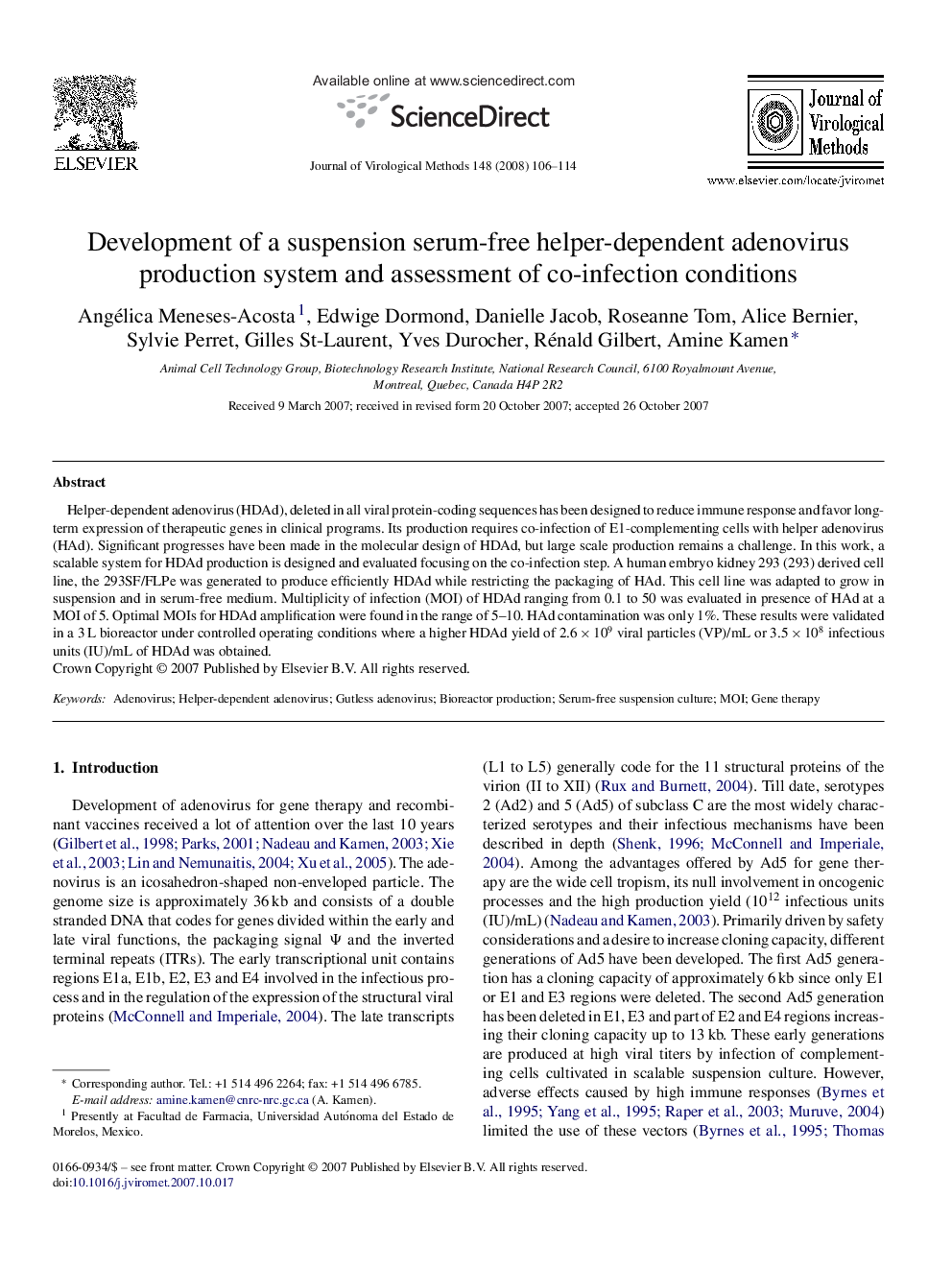| Article ID | Journal | Published Year | Pages | File Type |
|---|---|---|---|---|
| 3407921 | Journal of Virological Methods | 2008 | 9 Pages |
Helper-dependent adenovirus (HDAd), deleted in all viral protein-coding sequences has been designed to reduce immune response and favor long-term expression of therapeutic genes in clinical programs. Its production requires co-infection of E1-complementing cells with helper adenovirus (HAd). Significant progresses have been made in the molecular design of HDAd, but large scale production remains a challenge. In this work, a scalable system for HDAd production is designed and evaluated focusing on the co-infection step. A human embryo kidney 293 (293) derived cell line, the 293SF/FLPe was generated to produce efficiently HDAd while restricting the packaging of HAd. This cell line was adapted to grow in suspension and in serum-free medium. Multiplicity of infection (MOI) of HDAd ranging from 0.1 to 50 was evaluated in presence of HAd at a MOI of 5. Optimal MOIs for HDAd amplification were found in the range of 5–10. HAd contamination was only 1%. These results were validated in a 3 L bioreactor under controlled operating conditions where a higher HDAd yield of 2.6 × 109 viral particles (VP)/mL or 3.5 × 108 infectious units (IU)/mL of HDAd was obtained.
